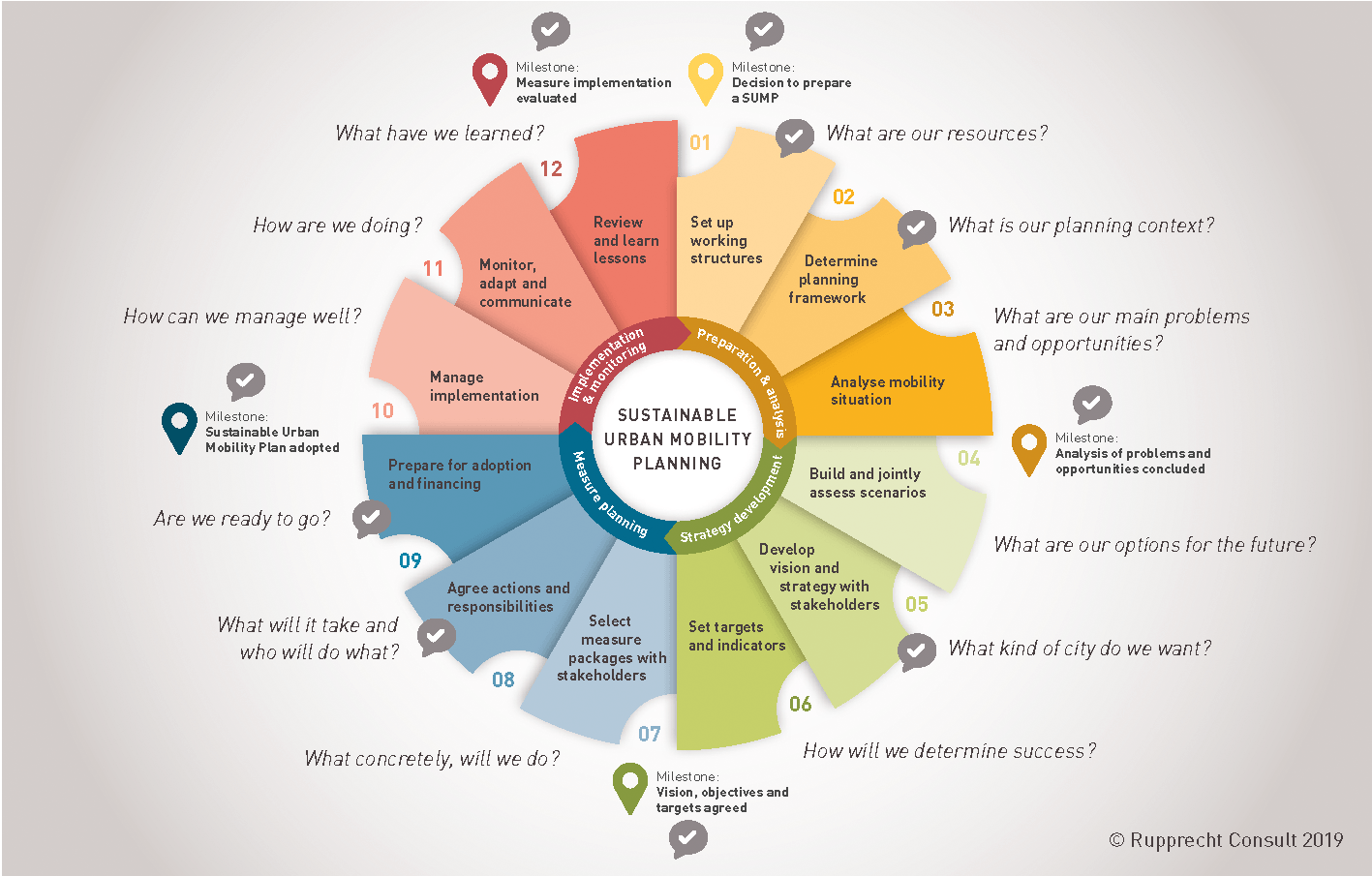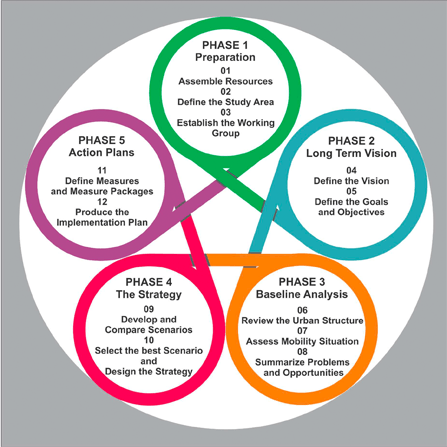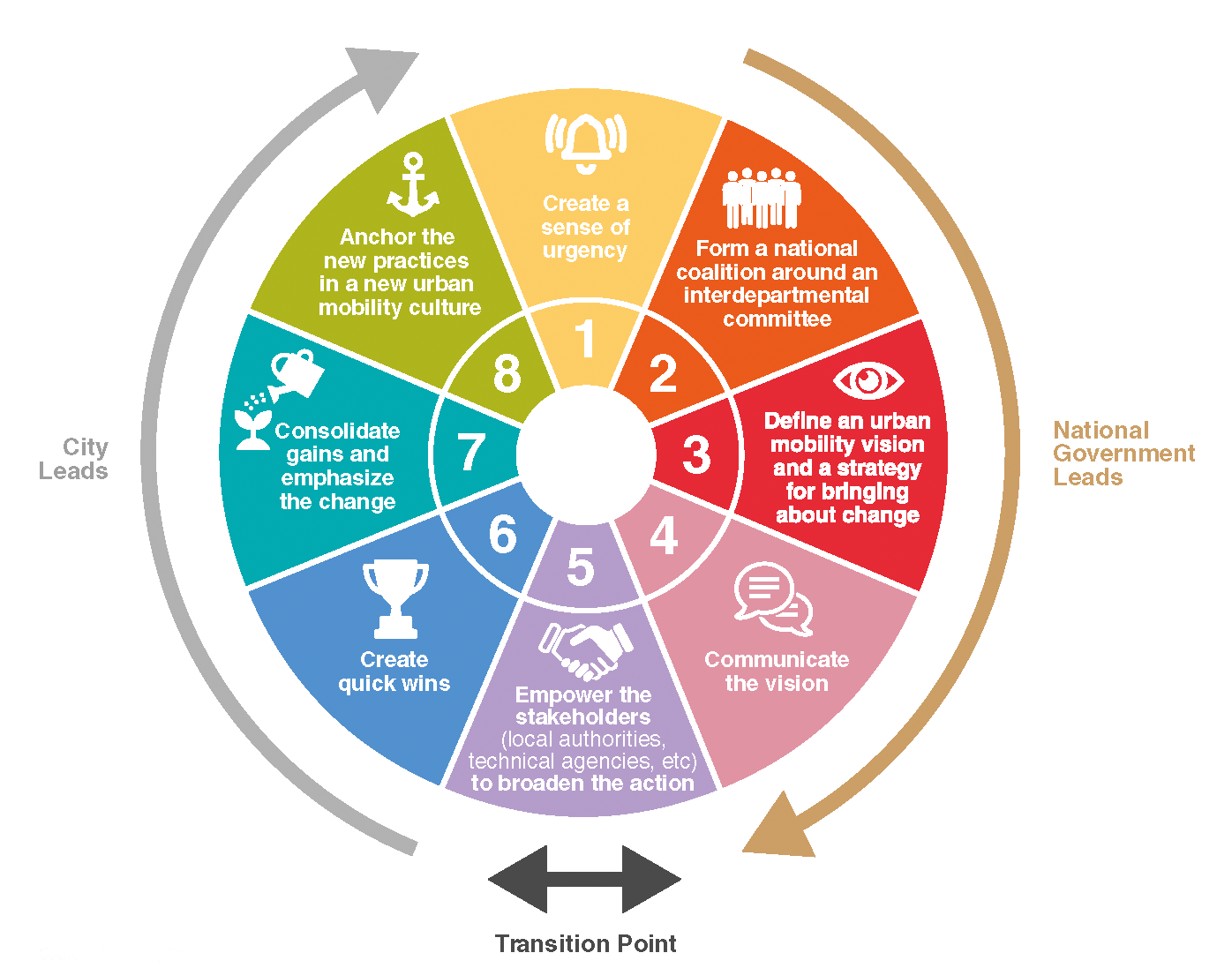
Although urban mobility plans are developed to meet the unique characteristics of each city, several countries have developed their own planning processes based on national policies and objectives. Many have adopted the European Commission "SUMP" process which focuses on Consultation and Sustainability. Some (such as Brazil and Indonesia) have adapted the EU process to agglomerations, groups of neighbouring municipalities and metropolitan areas. The World Bank, through its Africa Transport Policy Program (SSATP), has developed a rather unique urban mobility planning process that addresses the challenges in Africa by bringing together national governments and cities to develop comprehensive approaches by the public and private sectors. The details of these various urban mobility processes and links to the actual documents are presented below.
n
European Union
Sustainable Urban Mobility Plan "Cycle"
The “SUMP cycle” is a representation of a complex planning process. that involves 12 steps in a four-phase process:
- Preparation and Analysis
- Strategy Development
- Measure Planning; and
- Implementation and Monitoring
This process has been successfully applied in cities in Europe. Steps can be in parallel, the order can be adapted to specific needs, or an activity may be partially omitted if data is available.
n
Brazil
Passo a Passo (Step by Step)
Although inspired by the EU SUMP planning cycle, the "Passo a Passo" (Step by Step) process for developing the Brazilian Urban Mobility Plans is based on Brazilian planning processes designed to focus on accessibility and people's quality of life. The planning process involves 26 activities in a seven-step process:
- Preparation;
- Definition and Scope;
- Management procedures;
- Elaboration;
- Approval;
- Implementation; and
- Evaluation and review.
Each step is composed of a set of detailed institutional and technical activities that allow for consultation with civil society.
n
Indonesia
Developing a Sustainable Urban Mobility Strategy
The Indonesian process for developing a Sustainable Urban Mobility Strategy and Action Plan is also inspired by the EU SUMP planning cycle. It comprises a twelve-step process broken down into five main activity phases that reflects conditions in Indonesia and the challenges faced by the large metropolitan areas in the country. It has been developed during the development of the first urban mobility strategy for the Bandung metropolitan area by "learning by doing". It also reflects the need to develop strategies rather than plans for metropolitan areas that lack a metropolitan governance system. As well as mobility issues, it addresses accessibility, spatial planning, gender equality and social inclusion as well as freight and street vendors. It brings forward the vision definition activity to encourage collaboration among the agencies in the administrative areas that make up each metropolitan area.
n
Africa
Mobilizing National Leadership for Urban Mobility
Most authority, capacity, and resources are vested in national ministries and their agencies in Sub-Saharan African countries. Cities have limited autonomy and limited revenue-raising powers. Changing cities and their mobility policies will have to be initiated, authorized, and supported by National Government. The World Bank through SSATP has developed an eight-step process for bringing about this change. National Governments would lead steps 1 through 4 and cities would lead steps 6 through 8, with ongoing support and oversight from National Government. Step 5 is the key transitional step, in which National Government mandates, empowers and capacitates cities to plan, implement, and manage change.





